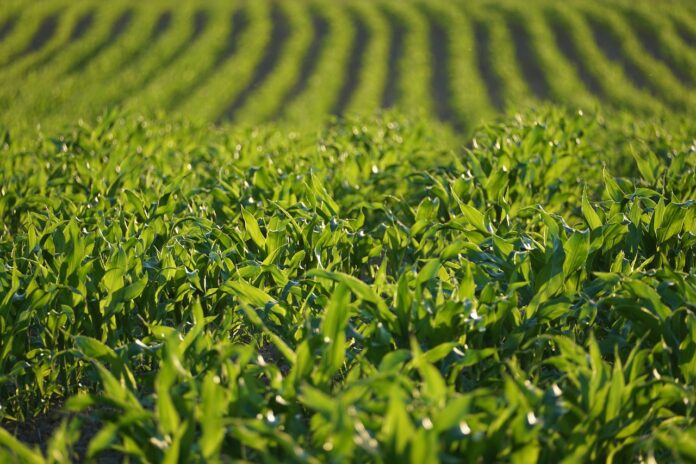Soybeans are the most volatile grain on the markets right now, but it is weather that is a the biggest cause for price moves right now.
Soybean prices have been volatile, with March 25 serving as a big example. The question in the markets has to do with the ability of the soybean market to stay above $12, a magic even number on the futures markets. In fact, we saw that price during the day March 25 and then watched it slip off the step at the close. We actually saw a high of $12.26-3/4 March 21, a bounce of 98 1/4 in less than a month.
Blame, or be grateful for, the pop in price on wet harvest weather in Argentina, and maybe on dry weather in the western Corn Belt and Northern Plains. Rain there is actually cutting estimates of the final crop size.
Estimates from BAGE (Buenos Aires Grain Exchange) have cut the crop by 2.5 MMT this week, to 54 MMT. Recently we saw an estimate of 56, so I’m not sure how the math works out. I am just sure this is a big problem for Argentine farmers and a pleasant problem for the CBoT, which is trading higher prices because of it. The prices are still not what we would call good, after seeing $14.13 1/4 back in the middle of November, followed by a steady decline of almost $3 before the recent recovery.
Our exports have not helped. The gains have been in spite of lagging exports. For the week ending March 21, the last export report, we shipped 769 kMT. That was 69 kT more than the week before, but well under the 892 kMT for the same week last year.
The seasonal totals this year are also off. Since the first of September, we have shipped 36.55 MMT, which is 84 MMT less than shipped for the season so far last year at this time.
Soybeans. That gets us to soybean stocks, which are probably more than last year. We will have the Grain Stocks Report from the U.S. Department of Agriculture March 28, the same day we get the Prospective Planting Report. For now, the trade is guessing stocks of 1.835 billion bushels. Traders also expect 86.7 million acres to be planted, which is 3.1 million more than last year. Credit that change to the relative price of soybeans being better than corn.
The Outlook Forum meeting some time ago was anticipating 87.5 million acres. The actual range of traders’ guesses is from 84.3 million to 89 million acres. That last would be a big, big switch.
Corn
May corn futures are an awful $4.37 right now, which is near midnight March 25. That is a long way from the $5.28 3/4 high Oct. 20. It has mostly been lower since then and was as bad as $4.11 3/4 near the end of February. We recovered to a high of $4.45 March 12 and another high of $4.45-3/4 March 21.
It is hard to say if the mild rebound in corn prices comes from trader estimates that indicate we will plant fewer acres of corn this year. Normally I would say it is too early to trade the acres, but there has not been much to influence corn positively recently, so traders might be looking ahead farther than normal.
Traders anticipate planting with a wide range of guesses, from 90 million to almost 94 million acres. The average guess is for 91.8 million acres planted to corn. That is 800,000 more than the Outlook Forum projected, but it is well below the 94.6 million acres we had in 2023.
Corn exports have been interesting for the week ending March 21. We shipped 1.23 MMT of corn, which is two times the amount of the same week last year. The accumulated shipments for the season so far are also ahead of the same time last year. We have shipped 24.4 MMT, a huge gain from the 18.3 MMT of this time last year.
Brazil on top
The negative news with corn exports is that we are no longer the world’s largest exporter of corn. That honor now goes to Brazil, helped by increases in their safrina (second crop) corn. Most of their production now comes from the corn planted in the same year, after soybeans.
It is hard to actually guess the planted acres because farmers don’t necessarily do what the traders think they should. A farmer will tell you he doesn’t want to change his rotation and will rather take his chances with price. Until a few years ago, the amount of actual change in planted acres was always much less than pure economic advantages suggested. In recent years, however, farmers have been willing to change. This started with the big run-up in corn acres for ethanol production. Once farmers did change, they have been more willing to plant according to economic advantage.
An example of resistance to change is the farmer my father traveled with on a trade trip to Brazil in the 70s. He farmed 2,000 acres with his wife, and they split the acres down the middle with corn and beans. Interestingly, they also split the labor, farming with two tractors and an assortment of tillage tools. She was responsible for 1,000 acres of primary tillage, with “her” tractor, he did the other 1,000. She stayed home, betting on early good weather. When he got back from Brazil, she was already 200 acres ahead of him! I’m guessing they were an example of a farming unit that did not switch acres much.













